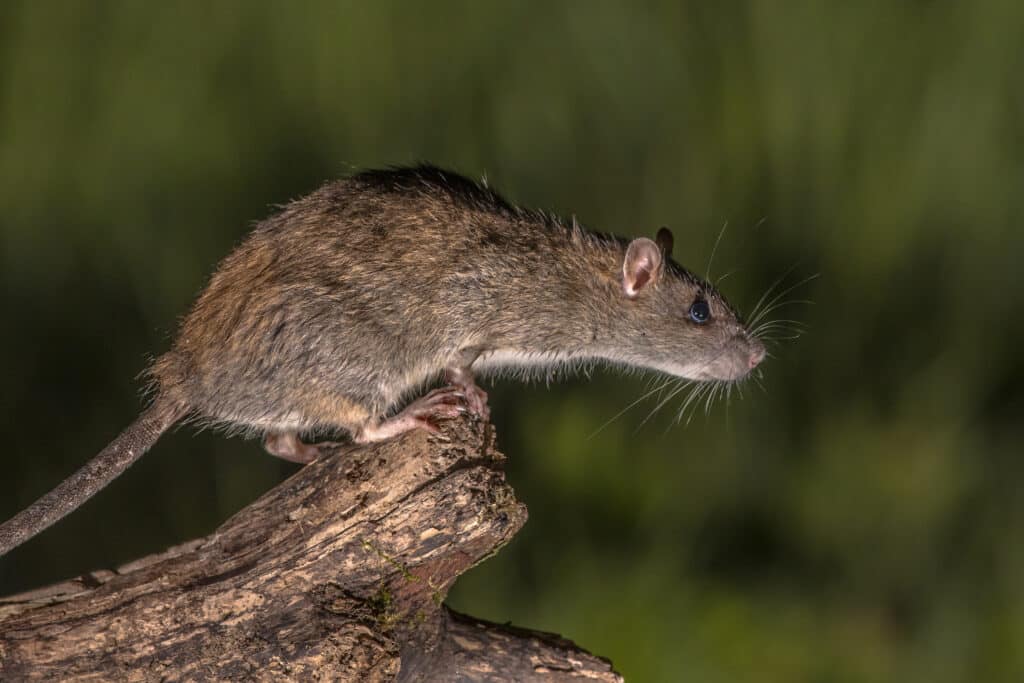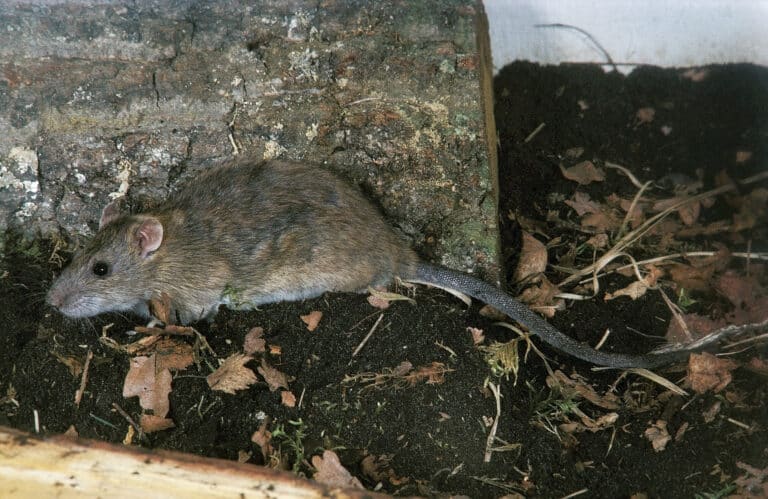Facts about Brown and Black Rats
Brown Rat Scientific name:Rattus norvegicus
Black Rat Scientific name: Rattus rattus
At a glance
- Neither of our two rat species are native: both were accidentally introduced.
- To all intents and purposes the Black Rat is now extinct here.
- Contrary to popular myth Black Rats did not spread bubonic plague across Europe – the human flea probably did.

Two species of rat are found in the UK, though somewhat ironically, given how familiar most of us are with rats, neither are native here.
The Brown (or House) Rat, which burrows and lives in almost any habitat as long as it can find shelter, food and water nearby is by far the most common; the Black (or Ship) Rat which climbs and tends live in buildings, is now one of the UK’s rarest mammals.
Black Rat
The Black Rat can perhaps lay claim to having been here the longest, having arrived with the Romans. Originally from India and Southeast Asia the species is a consummate stowaway, and was the species long blamed for the spread of bubonic (or black) plague. Scientists always puzzled about how the flea that carried the plague bacteria could have survived the cold winters in western Europe however. As is so often the case though, it’s us humans that are liable to be the problem: human fleas, not rat fleas, may be most to blame for the Black Death.
While still globally abundant (Black Rats are now found throughout Africa, Asia, Australia, Europe and the Americas, especially around large docks and food warehouses) here in the UK the Black Rat has been out-competed by the larger Brown Rat and has almost disappeared. The last permanent colony in the UK, on the uninhabited Shiant Islands in the Outer Hebrides (four miles off the coast of Lewis and twelve from the northern tip of Skye), was eradicated in an EU funded project begun in 2014. Apparently reaching the islands after a shipwreck in the 1900s, the rats were blamed for suppressing breeding seabirds on the islands. The evidence for this was unclear. Seabirds right around the British Isles are being impacted by overfishing and warming seas, but the islands were declared rat-free in 2018 and seabirds have indeed returned to the islands – at least for now. There may still be transient populations of Black Rats in London and Avonmouth (and perhaps on some small populations on offshore islands) but to all intents and purposes the species is extinct here.

Brown Rat
In complete contrast, the hugely adaptable Brown Rat is abundant in the UK. Originating in northern China and neighbouring areas, the species was introduced here in the 1700s; in fact, it has been carried on ships throughout the world and is now found on every continent except Antarctica. Its success is due both to its adaptability to a wide range of habitats and its incredible breeding rate.
Estimating just how many are here in the UK is difficult because they are not evenly spread and no proper surveys have ever been done, but in 2012 Dr Dave Cowan, then leader of the wildlife programme at the Food and Environment Research Agency, analysed previous studies to try to estimate a total population. He came up with an estimate of about 3 -3.5 million rats in urban environments and about seven million in rural areas to give a total of about 10.5 million – and that assuming you were standing at a given spot in an urban area the nearest rat would not be 6 feet (1,8 metres) away away but a more realistic 164ft (50m) away.
Despite being widely seen as vermin, Brown Rats actually help clean up after humans (they’re so abundant because they have adapted to urban life, eating garbage and other rubbish that we throw away), and are a key component of the food chain with foxes and many birds of prey reliant on rats and other rodents for food.
Rats are now an established part of the landscape, and while no-one really wants one living in their kitchen we still hope supporters will show compassion to any rats which may be in your garden or near your home.
To avoid your house becoming attractive to rats and rodents, you can follow the guidance of the SPCA
- Rats will be attracted to an area where food is easy pickings. To avoid attracting them ensure that any pet food and wild animal feed (bird seed) are regularly cleaned up and stored away securely.
- If food is stored, ensure you use plastic or metal containers to prevent the rat from eating through cardboard boxes.
- Maintain your garden, regularly mow and check for hiding spots, and pick up any fruit which may have fallen into your garden.
- Examine your home and look for cracks, cavities, pipes, and open vents that rats might use to enter, and use the correct materials (wire screening, gap fillers, expanding foam etc) to seal all the potential entry points.
- As part of your examination, ensure you remove any plants near the house to prevent the creation of hiding spots, including hanging baskets and wall climbers.
